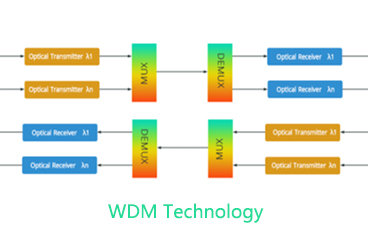Multimode fiber, often abbreviated as MMF, is a type of optical fiber primarily used for short-distance communication applications. Unlike single-mode fiber, which allows only a single light path, multimode fiber has a larger core that permits multiple modes (or light paths) to travel through it simultaneously. This structure enables higher data transmission capacity over short distances but can lead to modal dispersion over longer distances, which limits its effectiveness for long-haul applications.
"OM" stands for "Optical Multimode" and is used to classify different types of multimode fiber according to their bandwidth and performance characteristics. The main OM classes are OM1, OM2, OM3, OM4, and OM5. Here’s a breakdown:
OM1: With a core size of 62.5 micrometers, it supports lower data rates (up to 1 Gb/s) over short distances, commonly up to 300 meters.
OM2: Has a smaller 50-micrometer core and supports data rates of up to 10 Gb/s over distances up to 600 meters.
OM3: Optimized for higher speeds, OM3 can support 10 Gb/s over 300 meters and is also compatible with 40 Gb/s and 100 Gb/s applications over shorter distances.
OM4: Further enhances performance, supporting up to 10 Gb/s over 550 meters and 100 Gb/s over 150 meters.
OM5: Known as wideband multimode fiber, OM5 is designed to support wavelengths from 850 nm to 950 nm, allowing for multiple wavelengths to be transmitted simultaneously for increased data rates in short-reach data center environments.
OM designations classify multimode fiber types, each suited to different applications and maximum transmission distances, largely depending on bandwidth requirements.
Tags : Multimode Fiber, fiber cable , optic cable
— END —
























